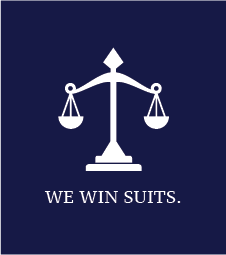Wells Fargo and Securities Fraud Allegations
- Sweetnam, Schuster, Schwartz

- Sep 29
- 2 min read
In recent years, Wells Fargo has faced a wave of lawsuits and regulatory scrutiny after revelations that employees created millions of unauthorized accounts to meet sales quotas. Investors allege that these practices distorted the bank’s financial performance and misled shareholders about sustainable growth. This article examines the scandal, the securities fraud claims that followed, and what the case means for investor protection going forward.

The Fake Accounts Scandal
Wells Fargo employees created millions of unauthorized bank and credit card accounts to meet aggressive sales goals. While this boosted performance metrics, it misrepresented the bank’s true financial health and misled investors about sustainable growth.
Securities Fraud Claims
When the scandal came to light, Wells Fargo’s stock price dropped, and investors filed securities fraud lawsuits. Plaintiffs alleged that executives knew about the misconduct but failed to disclose it, artificially inflating the company’s value.
Settlements and Accountability
Wells Fargo agreed to billions in penalties and settlements with regulators, customers, and investors. The securities fraud cases underscored the importance of accurate corporate disclosures and executive accountability.
Investor Protection
The Wells Fargo case highlights how securities fraud lawsuits can protect shareholders and promote transparency. When corporate misconduct misleads the market, these legal actions help restore fairness and integrity.
Frequently Asked Questions
❓ Question: What did Wells Fargo do wrong?
💡 Answer: Employees created millions of unauthorized accounts, which misrepresented the bank’s financial performance and misled investors.
❓ Question: How were investors harmed?
💡 Answer: When the scandal became public, Wells Fargo’s stock price dropped, leading to significant financial losses for shareholders.
❓ Question: What was the outcome?
💡 Answer: Wells Fargo paid billions in settlements and penalties, while securities fraud lawsuits helped hold the bank accountable to investors.
Final Thoughts
If you lost money due to false or misleading corporate disclosures, you may qualify to join a securities fraud claim. These cases ensure that powerful institutions like major banks are held to the same standards of honesty and accountability as any other business.
Don’t wait—if you’ve been harmed, file your claim today to explore your options and protect your rights. Contact Sweetnam Schuster & Schwartz, we fight for investors and hold corporations accountable. We win suits for you.


Comments